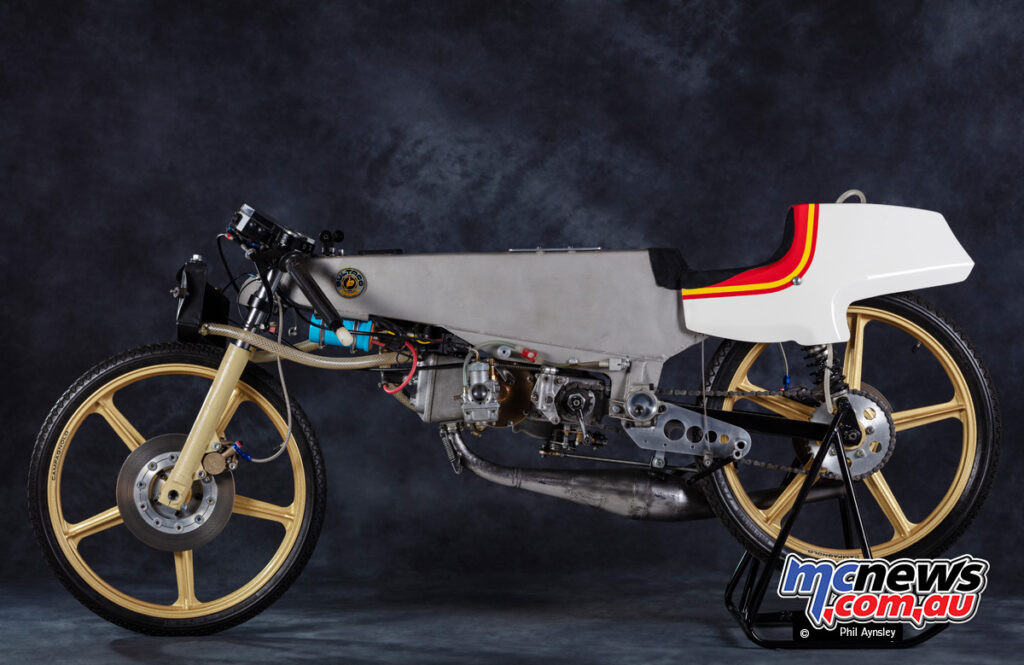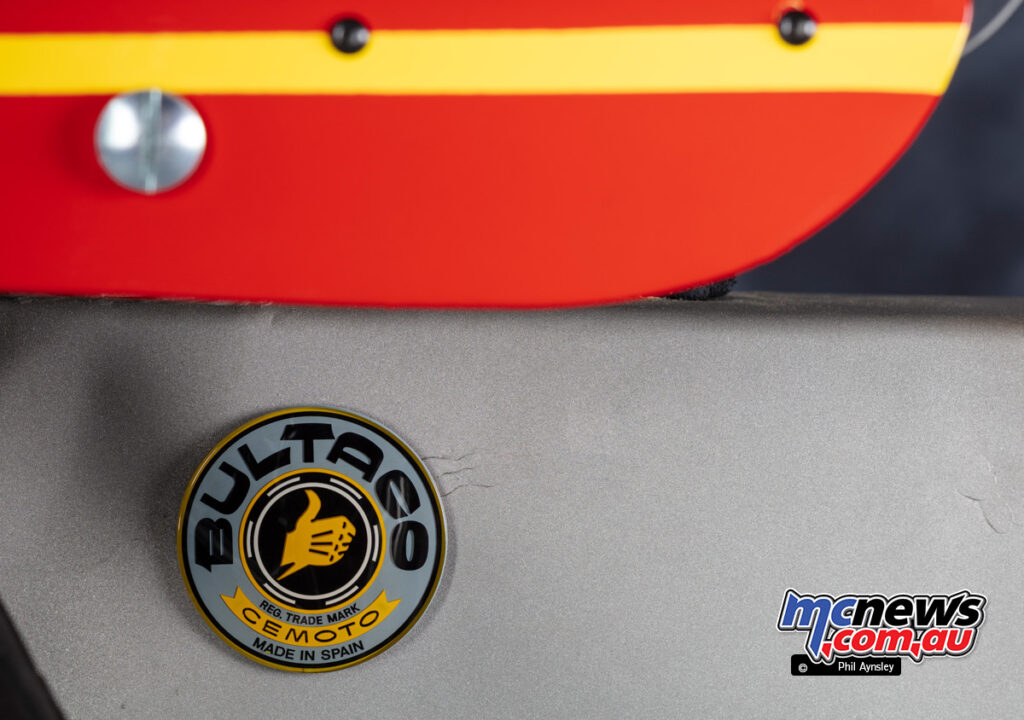Bultaco 50 cc GP Racer
With Phil Aynsley
Bultaco’s successful 50 cc GP bike had quite an involved history. Lets take a look…

The Dutch duo of Jan Thiel (engine) and Martin Mijwaart (chassis) designed their Jamathi 50 cc racer before the big change to the class regulations that took effect at the beginning of the 1970 season – the main one was the banning of multi-cylinder engines. The bike scored several GP victories in the years ’68-’74.
These results saw Edidio Piovaticci (interestingly a woodworking machinery manufacturer based in Peso – the same as Morbidelli) hiring the duo to provide 50 and 125 cc bikes for his rider Eugenio Lazzarini for the 1975 season. The 50cc Piovaticci saw the introduction of a stainless steel monocoque frame fitted with rebadged Jamathi engines and saw Lazzarini finish second to Angel Nieto on the Kreidler.

When Piovaticci’s company ran into difficulties at the end of the season it was Nieto who convinced the Spanish Motorcycle Federation, his main sponsor, to buy the whole team – which was moved to Barcelona placed under Bultaco’s direction. Nieto then proceeded to win the ’76 and ’77 titles on the bikes – now known as the TTS Mk2. The ’76 title was the first won by a bike with a monocoque chassis.
In 1977 two additional bikes were built without the reinforcing ribbing of the original frames. These bikes were mainly raced by Ricardo Tormo, who went on to win the ’78 championship. Bultaco also made four privateer replicas, based on Tormo’s bike (keeping one) but these used cast alloy crankcases, whereas the works bikes had always used the original Jamathi machined from solid crankcases. Six additional replicas were then built in 1979.

The bike seen here is an 1977 ex-Tormo machine on which he finished third in that year’s championship and won the title the following year with five wins and two second places from the seven rounds. In 1979 the bike was sold to privateer Daniel Mateos, fitted with a customer engine. He finished second in the Spanish 50cc Championship that year.
After passing through one other set of hands the bike was purchased by the current owner in late 1982 and was recently painstakingly restored by one of the Bultaco mechanics who worked on it back in the day. Power was 18.5 hp at 15,500 rpm, with a dry weight of just 55.5 kg. Top speed was 205 km/h.








































